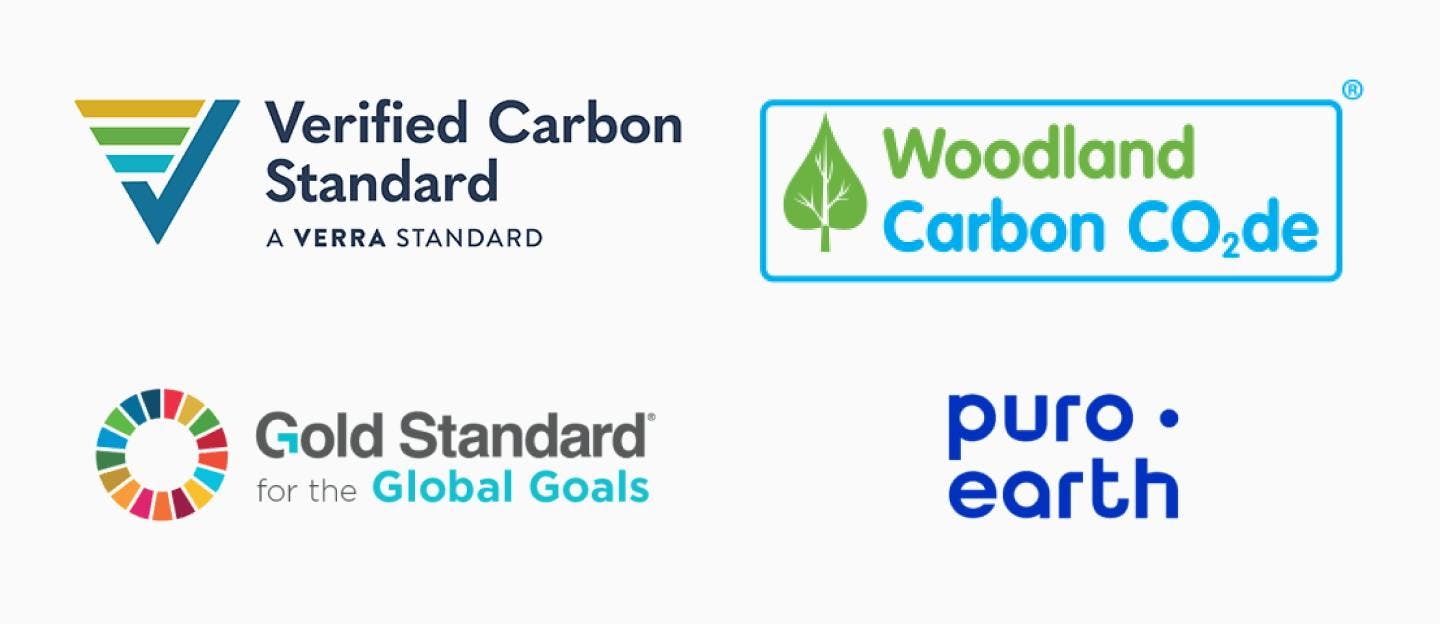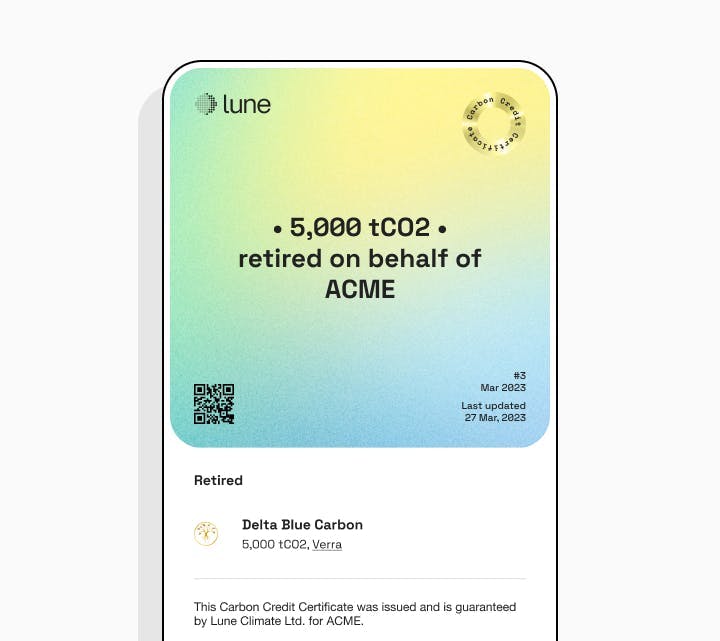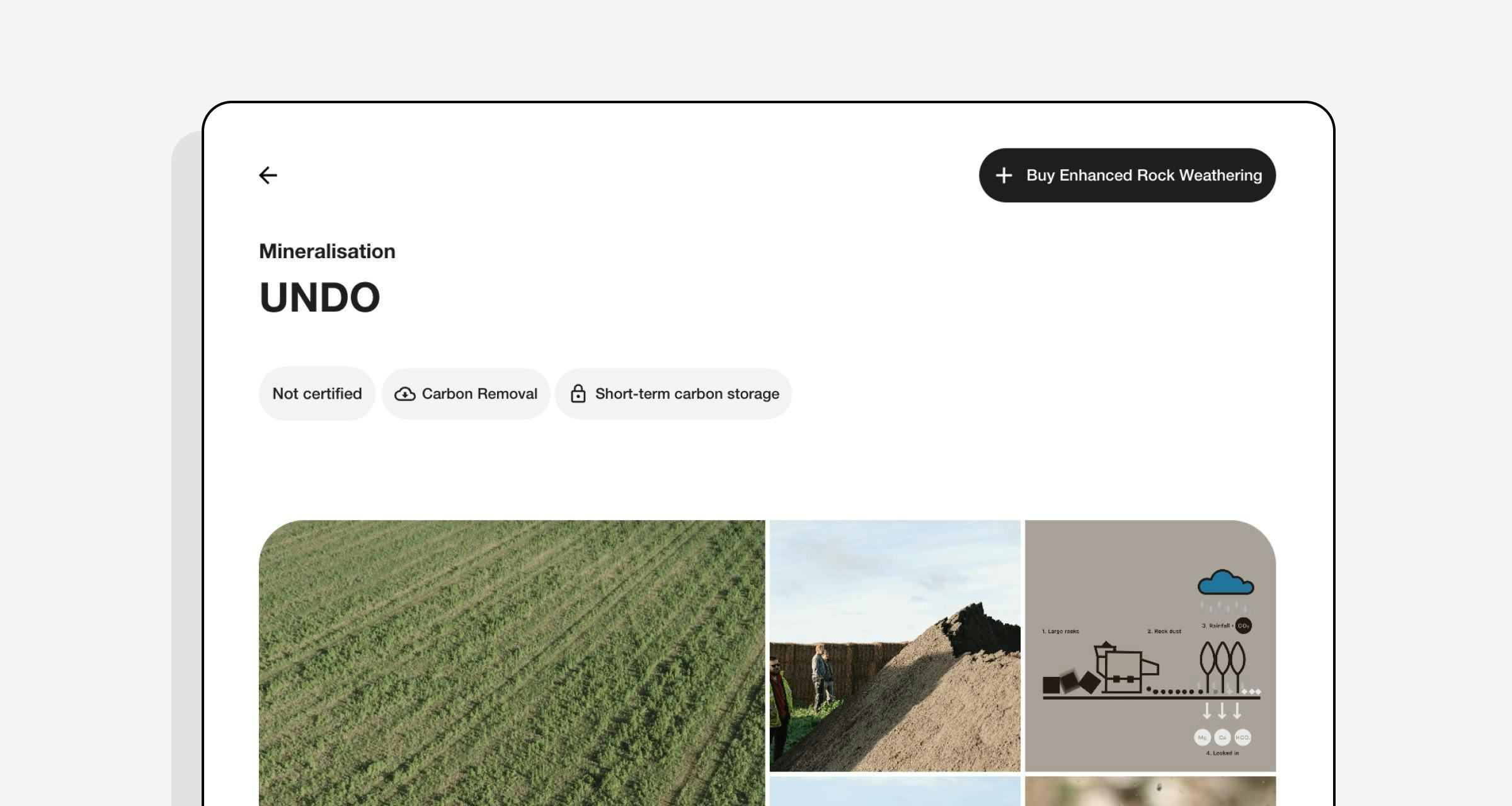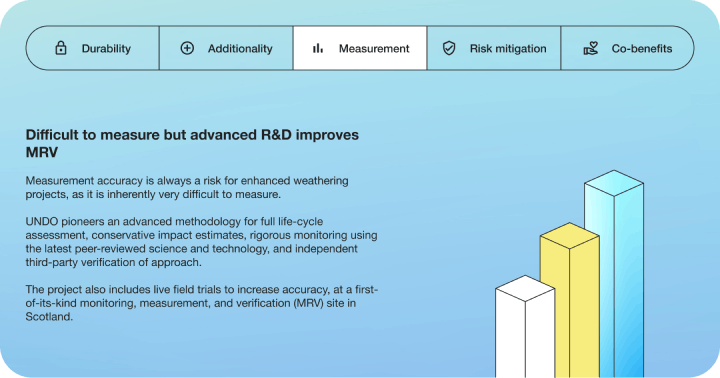

If you’re exploring carbon offsetting and the voluntary carbon market, you’ve probably come across carbon standards like Verra and the Gold Standard.
Not sure what they do?
Well, the voluntary carbon market (VCM) is currently unregulated. This has led to an abundance of low-quality carbon projects with questionable real-world impact, negating the value of the VCM as a system for financing climate solutions.
So, organisations have come about in the absence of regulation, working to safeguard the quality of carbon credits sold on the VCM through creating standardised programs – known as carbon standards.
Existing respected carbon standard organisations that you’ll come across include:
- Verra
- Gold Standard
- Climate Action Reserve
- American Carbon Registry
- Woodland carbon code
- Puro.earth
These carbon standard programs cover various different important processes for verifying carbon credits:
- Developing verified methodologies
- Third-party auditing and certifying carbon projects
- Issuing and retiring carbon credits within a registry.
Let’s take a look at each of these in more detail.

Developing verified methodologies
Carbon standards develop methodologies for different types of carbon projects, detailing how the carbon benefit (emissions avoided or carbon removed) should be quantified in that project type to determine how many carbon credits should be issued.
The methodology is vital in ensuring carbon projects are high-quality – if a project overestimates its carbon benefit through inaccurate calculations, it could lead to carbon credits being issued above and beyond the actual impact of the project.
To ensure accurate calculations, methodologies give guidance on:
- Applicability conditions i.e. the scenarios that the methodology is relevant for
- How to calculate the baseline scenario of carbon emissions
- How to account for leakage
- How to determine and prove the additionality of the method
- What a monitoring plan should include for that project type
Project developers setting up a new project will then use the methodology as the starting point for designing and developing their project, to ensure they align with best practice.
Different carbon standards typically have focus areas in terms of the methodologies they develop. For example the Verified Carbon Standard by Verra focused on methodologies for nature-based projects such as blue carbon and forestry whereas the Puro.earth standard focuses on carbon removal project types.
It can take a long time for methodologies by carbon standards to be developed and released, as it requires a significant amount of research and data to be available. For this reason, not all types of carbon projects are able to use methodologies that are verified through a carbon standard – particularly new and innovative project types like Direct Air Capture or ocean carbon removal.
Subscribe for the latest insights into driving climate positivity
Third-party auditing and certifying carbon projects
Carbon standards certify individual carbon projects, checking their approach against their verified methodology for that project type, to ensure the project’s approach is in line with best practices, that they have properly quantified their carbon benefit, and that there are no negative consequences of the project e.g. to local communities.
Typically, carbon projects will be audited both by the internal staff team of the carbon standard, and by an independent third-party.
Being certified by a carbon standard is essentially a stamp of approval for a carbon project, showing that their project is robust and the carbon credits they sell are credible.
All well-established types of carbon projects such as forestry, biochar, renewables, soil carbon, land management etc have access to verified methodologies through a carbon standard, and so you would expect carbon projects of these types have been audited and certified by a carbon standard – if they aren’t, it’s a big red flag for the quality of the project as it indicates they have not followed an approved methodology.
Issuing and retiring carbon credits
Carbon standards organisations also facilitate the buying and selling of carbon credits for the projects that they certify.
Often carbon standards host their own carbon registry – a system through which carbon credits are issued, sold, and retired. This ensures all carbon credit purchases are tracked, fully traceable, and are publicly available – avoiding double counting.
So, if a carbon standard has their own registry, therefore, they will manage the credits for the carbon projects they certify within that registry. An example of this is the Verra registry.
Not all carbon standards host their own registry; some use standalone, independent registries. All carbon credits for projects certified by Gold Standard, for instance, are retired on the IHS Markit registry, an independent establishment.
Examples from the Lune library of carbon projects
To put the work of carbon standards into context, let’s take a look at a couple of projects from Lune’s library of high-quality carbon projects.
As we mentioned previously, for well-established project types (like forest conservation or restoring coastal wetlands) we’d expect a carbon project to have been certified by a carbon standard, showing that their methodology aligns with approved standards – it’s one of the key markers of quality that we look for when evaluating projects for our library.
Delta Blue Carbon, for instance, is a project focused on restoring coastal wetlands in Pakistan, where a large mangrove forest has been degraded.
In the Lune dashboard, you’ll see that they have been certified by Verra:
 Delta Blue Carbon, a carbon project restoring coastal wetlands through mangrove conservation, shown in the Lune dashboard
Delta Blue Carbon, a carbon project restoring coastal wetlands through mangrove conservation, shown in the Lune dashboardAnd we include a link to their Verra project page, which contains the verification and monitoring reports which demonstrate how they have adhered to the rules of Verra’s Verified Carbon Standard – as well as a link to their ‘issuance record’ which shows all carbon credits issued, sold, and retired by the project.
When you buy carbon credits from Delta Blue Carbon through the Lune dashboard, you receive a carbon offset certificate proving your purchase. This also highlights the carbon standard through which a project is certified, and includes the same link to their project page.
 A Lune carbon offset certificate showing 5,000 tCO2 retired on behalf of ACME, in the Delta Blue Carbon project.
A Lune carbon offset certificate showing 5,000 tCO2 retired on behalf of ACME, in the Delta Blue Carbon project.On the other hand, we also include projects in the Lune dashboard which are not yet certified through a carbon standard. As highlighted previously, these are projects that are in the early stages of development, where there is not yet an approved methodology.
In these cases, you will see ‘not certified’ – like for UNDO, for instance.
 UNDO, an enhanced weathering carbon project in the UK, shown in the Lune dashboard
UNDO, an enhanced weathering carbon project in the UK, shown in the Lune dashboardUNDO is an enhanced weathering project, a fairly early technique of carbon removal. There’s no fully approved methodology for their technique of enhanced weathering currently, so you’ll see ‘not certified’ in the Lune dashboard:
For projects that are not certified yet, it’s important to understand how they are approaching their methodology – they are unable to follow an approved methodology so they should have a robust and scientific approach to quantifying and monitoring their impact themselves.
With UNDO, for instance, you’ll see in their project quality assessment that they are actually collaborating with independent third parties to develop their own methodology for enhanced weathering, which will set the standard for other similar projects.
 Quality assessment for UNDO in the Lune dashboard, showing the 'measurement' panel.
Quality assessment for UNDO in the Lune dashboard, showing the 'measurement' panel.To learn more about UNDO, Delta Blue Carbon, and the other carbon projects in our library, log-in or sign-up to the Lune dashboard to get started.
Readers also liked
Readers also liked

Subscribe for emissions intelligence insights
Get the latest updates in the world of carbon tracking, accounting, reporting, and offsetting direct to your inbox.


